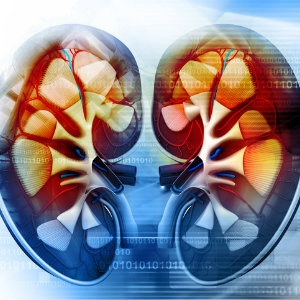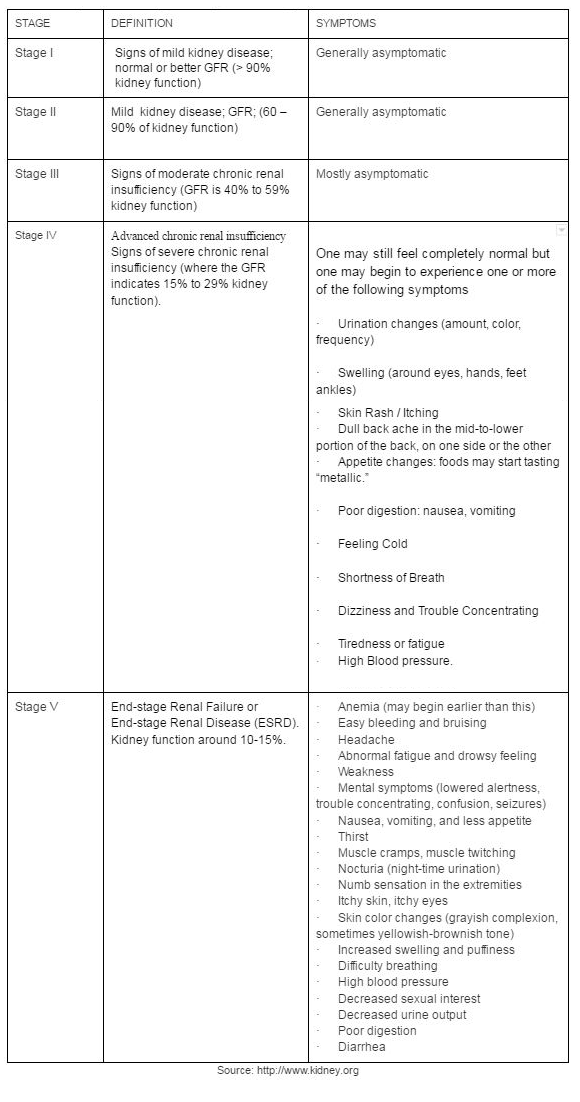5 Stages of Chronic Kidney Disease
 Chronic kidney disease (CKD), a progressive disease that can lead to kidney failure and death, affects 26 million Americans. Early detection can help to prevent or delay progression of the illness. However, early detection can be problematic because the signs and symptoms of early kidney disease are often not obvious.
Chronic kidney disease (CKD), a progressive disease that can lead to kidney failure and death, affects 26 million Americans. Early detection can help to prevent or delay progression of the illness. However, early detection can be problematic because the signs and symptoms of early kidney disease are often not obvious.
To raise consciousness about CKD, the National Kidney Foundation, a nonprofit founded in 1964, has focused on the awareness, prevention and treatment of kidney disease. The foundation’s efforts are continuing to change the way kidney disease is identified and treated, thereby providing millions of Americans with an opportunity to stay healthy longer.
In 1997, the NKF developed the first broadly accepted standard of care clinical practice guidelines in nephrology. The guidelines are now known as KDOQI—Kidney Disease Outcomes Quality Initiative Guidelines.
One momentous achievement of the 2002 clinical practice guideline initiative was the definition of the "Five Stages of Kidney Disease." This standardized classification of kidney disease gave healthcare providers, patients and those at risk an opportunity, for the first time, to detect renal disease, recognize its degree of seriousness and become proactive in slowing the disease and averting complications.
Based on one’s Glomerular Filtration Rate (GFR) or the rate at which the kidneys filter waste related to a patient’s kidney function, the five stages are as follows:





